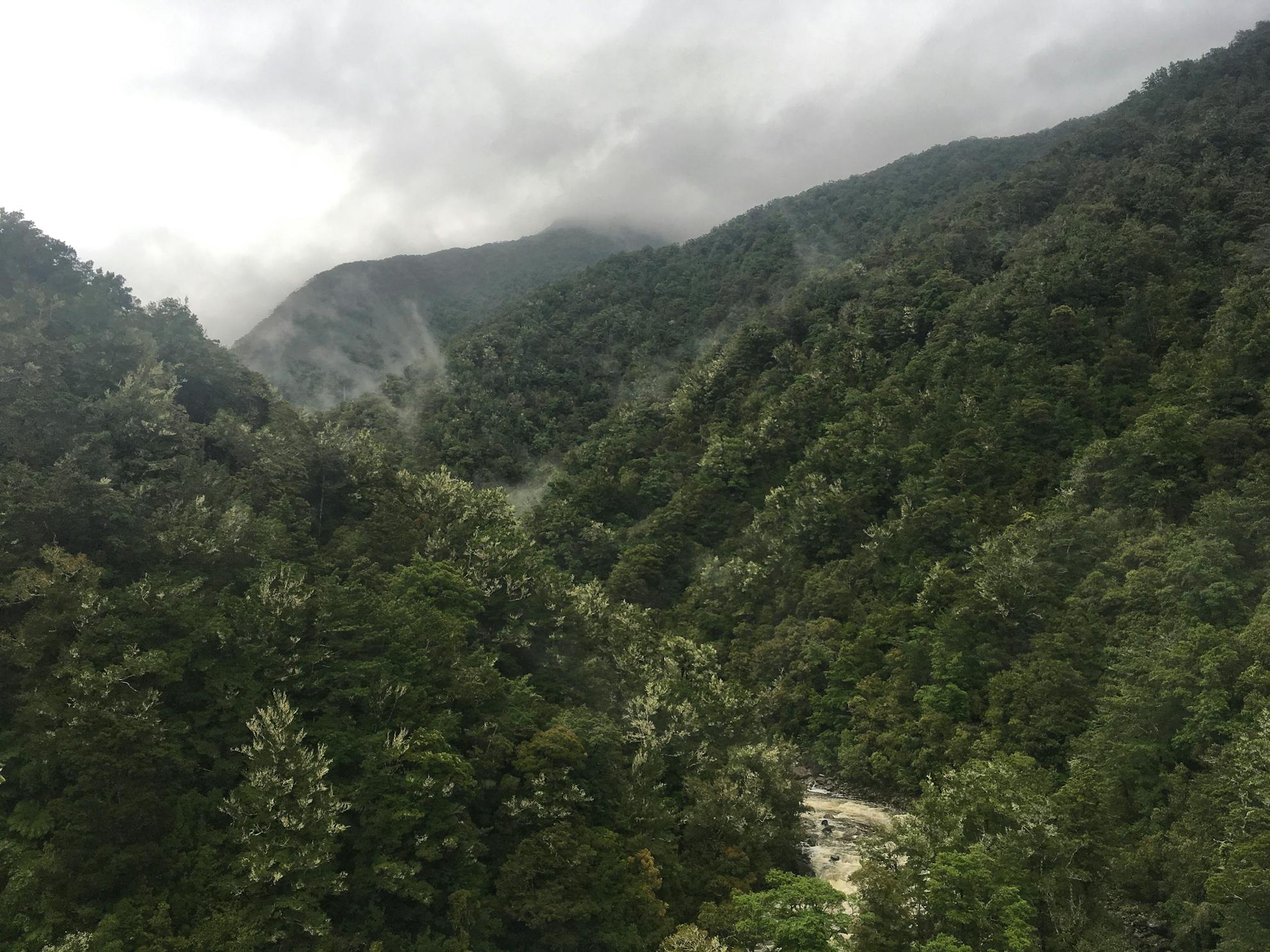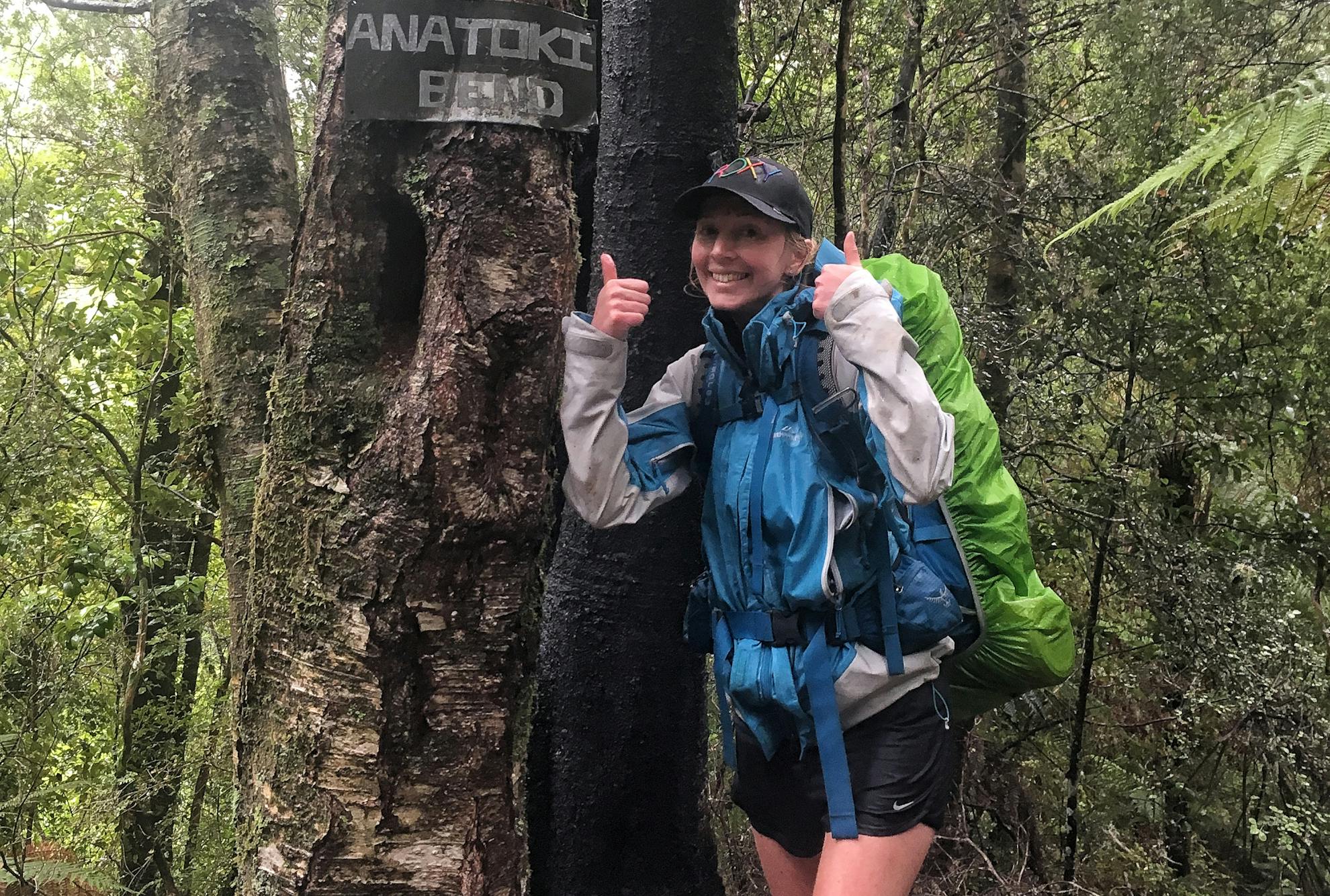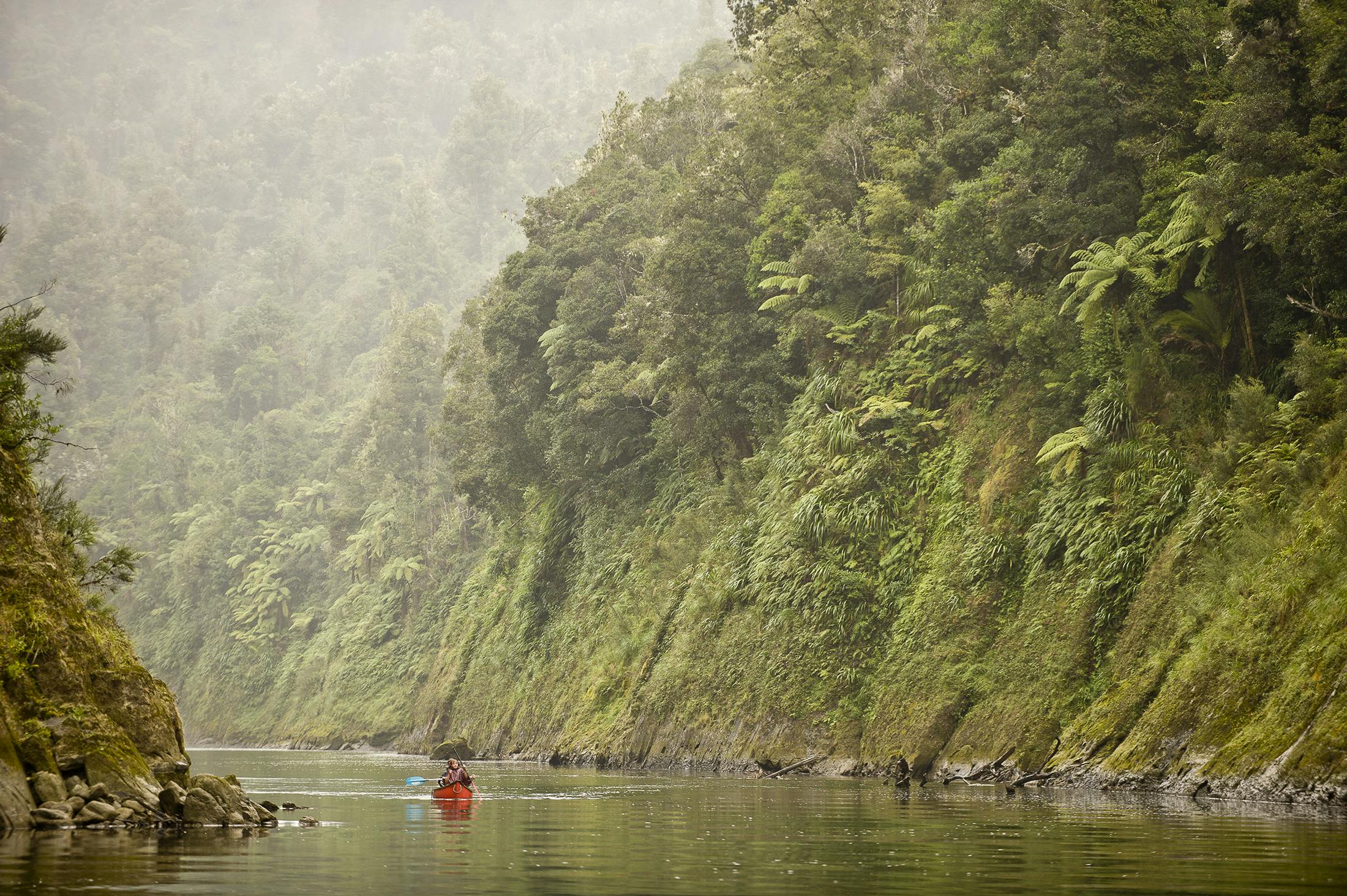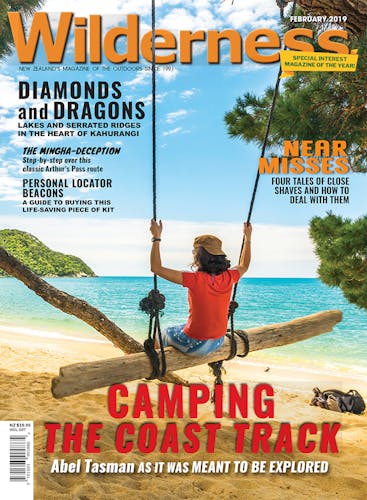When disaster strikes in the outdoors, preparedness, training and luck can be the best defences you have – and sometimes survival comes right down to the wire.
Gasping for air as my head broke the surface, I turned upriver to see if my partner had made it out of the canoe.
Spying her bobbing head 10m away, all tension left my body – any predicament felt miniscule compared to my fears of half a minute ago. Panic was plain on her face, and I yelled to relax and go with the current. From a rapidly-growing distance, I could see nothing could be done to dislodge our canoe – loaded with all of our belongings, it was bent firmly around a half-submerged tree, pounded by the Whanganui River.
Five friends and I were just a fraction of the paddlers delivered onto the river that Easter weekend, and after a hectic morning amongst hundreds at the boat ramp, we were finally away from the crowds.
My partner and I found trouble within a few hours in a rather fierce rapid. Aiming the canoe towards a downstream V adjacent to a partially-submerged tree, the river decided it had other ideas, and it was useless to argue.
Our canoe was sucked perpendicular to the river flow and slammed sideways into the tree – the force of the water pushing the upriver edge of our canoe under.
We both tipped into the river, and were immediately swept under its brown waters and pinned inside the upturned canoe.
Submerged and trapped by the river’s weight, I realised – perhaps for the first time in my life – I was in a position where I would die if I couldn’t find a way to help myself.
I don’t know how long I struggled tooth and nail to free myself, all the while worried at how my partner was faring at her end of the canoe. I thought of her mum getting the news, and realising my friends were too far away to help us, I spent seconds feeling guilty that my potential drowning would ruin their weekend.
With a little luck and a lot of determination, I scraped myself out over the lip of the canoe, having been stuck within it for what felt like minutes.
Relieved, I floated downriver, and was picked up by strangers around a bend in the river. They got me warm and pointed out a few wounds I was too shocked to notice. Out of sight, the rest of my group did the same for my partner.
When we caught up a few minutes later, looking a little worse for wear, we had no option but to carry on, three to each canoe. Our confidence squashed, and a little off balance, we faced the four hour journey to our first campsite – our canoe and belongings still wrapped sadly around the tree.
I lost my camera that day, but fortunately everything else was returned to me dry the following morning – our tour operator had to chainsaw the tree from a jet boat to free our broken canoe.
We finished our journey on a fresh vessel, shaken and thankful to be above water again. Despite being my most expensive possession, my camera felt a small price to pay for my escape.
International Technical Rescue Association swiftwater instructor Steve Glassey says rivers are responsible for more deaths than fires in New Zealand, and can be underestimated by Kiwis.
“People often don’t know where their limits are until they find themselves in a real world situation, and by then it’s too late.”

Escaping a river strainer (an obstacle water flows over, but boats or people get stuck on) can often come down to luck, Glassey says, and they’re often deadly.
“As soon as you hit one and feel the full force of the water – it’s frightening. It opens your eyes to how much force there is in the river.”
Education and prevention are the best defence, he says, and boating in groups and researching the route can help.
If you’re able to escape a strainer, keep your feet pointed downriver, and if possible, lean your body left or right to direct yourself to safety, Glassey says.
If in doubt, wait it out
Auckland tramper Samantha Beattie also knows first hand the strength of rivers. In January 2017, she completed the three day Anatoki Track in Kahurangi National Park with her friend Alex MacDonald.
Wet weather had set in for their final night at Anatoki Forks Hut, and with transport pre-arranged for the following day, the pair decided to chance the route’s river crossings and walk out in the morning.
“Another couple had walked in late the night before and hadn’t thought the crossings had been too bad – of course, this was before another 10 hours of rain,” Beattie says.
What would have been easily-manageable rivers in fine weather had turned into fast-moving torrents, pouring down the hillside.
The pair managed to tackle several smaller crossings successfully, but as the track progressed, the crossings became more difficult, taking up to half an hour to navigate.
The route’s largest crossing proved too deep and fierce at its intersection with the track, and unable to cross, they headed upstream in search of a safer route.
“We eventually settled on an area and started our attempt. Alex went first and got [on top of a rock] in the middle. I followed, but I’m much smaller and the water was strong,” she says.

The force of the water wedged Beattie against the rock, before sweeping her off her feet entirely.
Still on top of the rock, MacDonald was able to grab Beattie by the arms, and for several minutes fought to get her out of the water.
“It was absolutely terrifying and I very easily could have been carried down the waterfall where I could have fallen on branches, hit my head or got wedged underwater,” Beattie says.
“The only thing stopping me was that Alex had grabbed onto my arms, and using all his strength he was eventually able to haul me up onto the rock.”
Wet and cold, Beattie made it to the other side and changed into dry clothes.
“When I was pulled out, I was very scared and upset. I burst into tears partly for fear and partly relief. I had some bruises and scrapes and my arms were sore from being pulled but no major injuries,” she says.
“Even now the sound of water thundering down makes me feel a bit anxious. It’s changed the way I tramp as I am much more mindful of the weather forecast and difficulty of the track – in particular knowing that a tramp may take longer than expected and to be mentally prepared for that. I also take fewer risks and certainly wouldn’t attempt a river crossing like that again.”
Glassey says there are several simple methods trampers can use to gauge whether a river is safe to cross.
“If you throw in a stick, and it travels faster than your walking speed, it’s too swift to cross,” he says.
“When a river is discoloured and full of debris, it’s in flood and still rising, but when rivers start to drop, they no longer collect wood from the sides, and should have less debris.”
Making a rock cairn on the riverside can also help to indicate whether a river is rising or falling.
Packing a bag correctly will aid with buoyancy if things go pear-shaped, and water shouldn’t be higher than the thighs or knees of the shortest person in the group.
Most importantly, Glassey says, if you don’t have to cross, don’t, and if you have any doubt, wait it out.
Windy wake-up call
Larissa Mueller was tramping the Makino Hut Track with a friend, attempting to traverse the length of the Kaweka Range from north to south, when powerful weather intervened.
With the forecast predicting gale force winds, the pair decided to press on in the bush from Makahu Road and see how they fared.
“We underestimated the power of the wind on the tops – especially after we popped out of the bush and we had to sidle around a big scooping gully funneling the wind straight at us,” Mueller said.
Once in the full brunt of the wind, the pair were closer to the next track junction than they were to the treeline and decided to continue on.
The wind was so fierce they were forced to inch forward along icy snow on hands and knees, and the plan to reach the hut had to be abandoned.
So quickly had the weather hit, Mueller says it was too late to stop and layer up.
“Once we realised it wasn’t going to happen, we scrambled and slid off the ridge out of the wind into a steep gully running parallel to the track. We started traversing diagonally downhill, aiming to stay out of the wind and bush bash to the track.
“It was rough going with tonnes of windfall, so eventually we decided to camp out before pushing on in the morning.”
MacDonald grabbed Beattie by
the arms, and for several minutes fought to get her out of the water.
“It was absolutely terrifying and I very easily could have been
carried down the waterfall.”
Despite planning to stay only in huts, Mueller had brought her two person tent along as an emergency shelter.
“We found the flattest spot we could and crammed it in around a rock that I ended up spooning in the night. I had been so confident in our ability to reach the huts that I hadn’t taken a mattress.”
With their shelter up, they settled in for a cold night with little sleep.
“We were at the point that we could barely move our fingers, and our brains were very sluggish. We had some dehydrated meals with us so we just managed to boil some water and get those into our exhausted bodies,” Mueller says.
“I definitely think we were mildly hypothermic.”
In the morning, the pair decided to set off home, but upon reaching an empty Middle Hill Hut on the way, they decided to spend a night in relative comfort.
“We spread everything out to dry and had the best time napping on the mattresses in front of the fire and eating all our food. I’ve had a special spot in my heart for backcountry huts ever since,” she says.
Mueller says the adventure could have easily become a lot more serious, and the experience has given her a wake-up call.
“We learned to pay more attention to the weather forecast and I have had a healthy respect for high winds ever since.
I learned to always bring a sleeping mat, and think about layering up before getting cold.”
Wilderness medicine researcher Dr Malin Zachau says hypothermia was a real risk for Mueller, but calorie consumption was the right thing to do.
“Clothing, shelter and insulation from the ground can all help to reduce heat loss but cannot help to reverse a process of further cooling unless the body has sufficient metabolic reserves. This means food and calories,” she said.
“You need lots of calories to produce warmth and it is better to eat them before getting exhausted or when your fingers are too cold to light a stove or unwrap a protein bar.”
Dr Zachau says there are many outdated myths surrounding hypothermia, such as the advice to share body heat in a sleeping bag.
“This is not an effective way to add heat because the other human body produces far too little heat. You actually need 300 naked, normothermic people in a sleeping bag to rewarm a hypothermic patient. You would need a very large sleeping bag.”
Blind luck
Some near misses can be prepared for, while others come down to blind luck.
For Malcolm Johnson of Morrinsville, it was the latter.
In April 2015, he and his partner Mary van Dongen enjoyed a 13-day return hike to Mt Everest Base Camp, a dream holiday for the couple who enjoy tramping and hunting in the central North Island.
On the morning of the 25th, they flew back to Kathmandu from Base Camp Airport, landing just hours before a magnitude 7.8 earthquake hit at 11.56am, killing nearly 9000 people.
A delay on the flight was one of many chance occurrences which may have saved their lives that day, as their scheduled flight would likely have put them further into harm’s way.
The couple was shopping on a narrow Kathmandu street when the earth began to move.
Having experienced earthquakes in New Zealand, Johnson knew immediately this one was different.
“It started rumbling, and it just kept building and building in intensity. Waves started coming towards us of buildings coming down,” he said.
“Sharing body heat in a sleeping bag is not an effective way to add heat –
you would need 300 naked, normothermic people in a sleeping bag
to rewarm a hypothermic patient.”
The couple sprinted into the widest area in sight – a street square – while buildings crashed down around them, burying stalls and people. Tangles of power lines threatened from above, but thankfully remained standing.
“If we didn’t make it to the square, there would be a good chance we would be dead,” Johnson says.
“We were real lucky… that’s all it was – luck.”
Johnson sprang into action, helping to recover those buried under the rubble.
“It was hard to get my head around why so many people were walking around not helping, but I realised they were getting home to check on their families,” he says.
“We had nowhere to go, and we knew people were buried.”
After a few hours, the couple returned exhausted to their accommodation to find it still standing, if a little haphazardly – its adjacent buildings were leaning against it from both sides.
The staff had gone home to check on their families, but most returned later to look after the guests.
In a room five storeys up, the couple spent the night enduring aftershocks, and it wasn’t until the following morning they were able to get a message home.
“I had five kids at home wondering where the hell is dad, so it was pretty emotional to get in touch,” Johnson says.
Even in crisis, the couple was blown away by the kindness of the Nepalese people, one of whom gave them a place to sleep at his home, after they were turned away by the Australian Embassy.
“The people there really looked after us. There were a few in their late teens who stuck by us – still smiling even though their whole town had been bowled over.”
With plans to visit India, the couple found themselves stranded in Kathmandu, as all tourist flights had been given up to residents.
When they eventually made it out, Johnson says he felt guilty to leave the broken country behind.
“I wanted to stay, but at the same time, had to get out of there and get home to my kids. I had to be selfish,” he says.
Despite his ordeal, Johnson plans to return to Nepal to complete several of the lesser-known routes around Everest.








